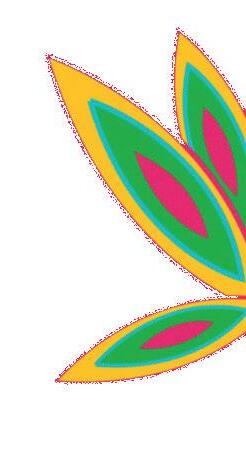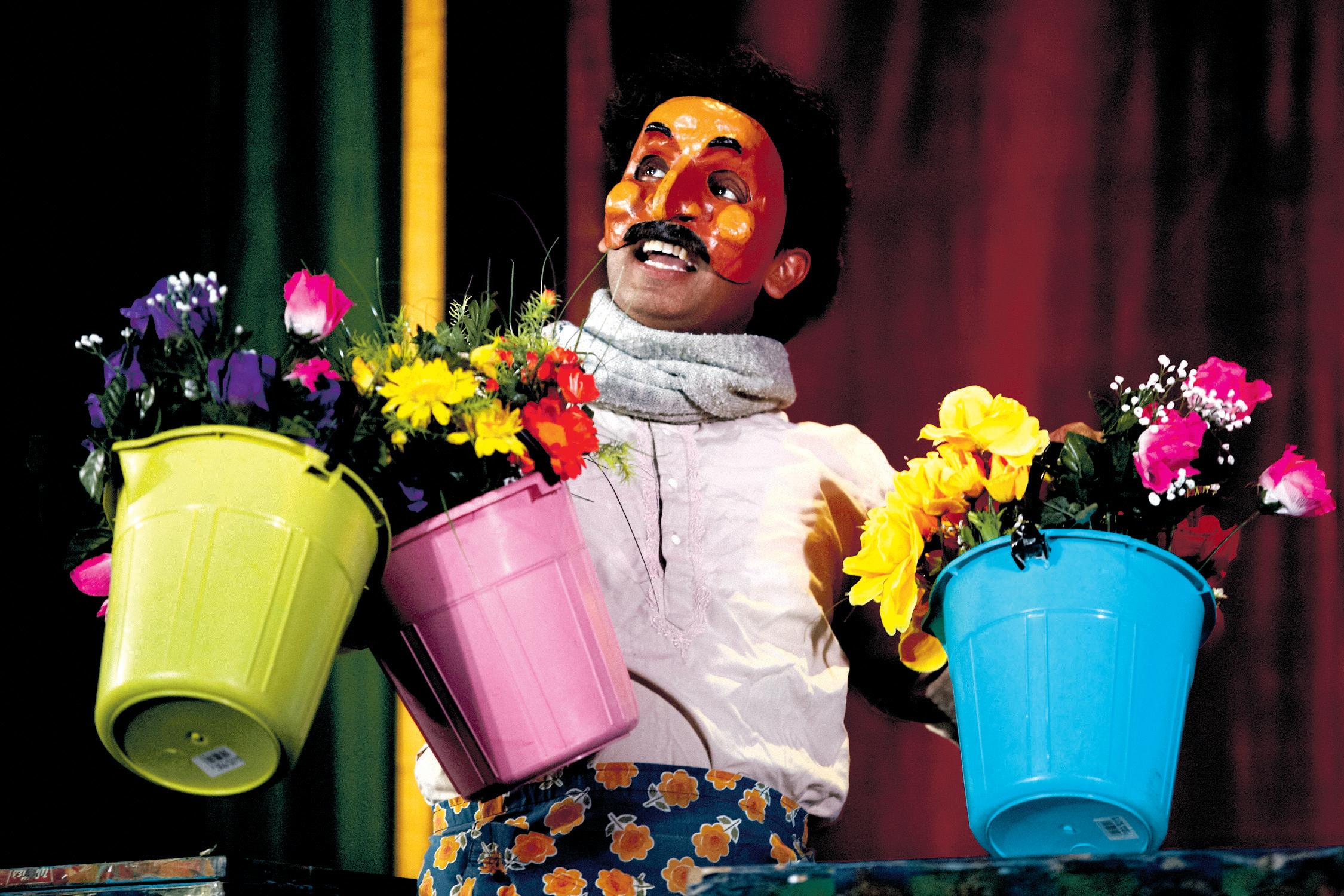
6 minute read
P arramasala
from 2012-11 Sydney (2)
by Indian Link
and combining them to create music, probably best symbolises what Sydney is today – people from various countries and cultures coming together to create their unique culture and identity.
The choice of instruments –the sarod, a stringed instrument typically used in Indian classical music which had been wired to play western music, drums, cajon which is an Afro-Peruvian percussion instrument, all came together to create unique music which drew from both Indian and western music and was more than the sum of the parts of either music styles.
Starting the show with an audio-visual aid showing a mountaineer passing the Khumbu icefall trying to scale the Everest, the duo played a piece titled Quest, symbolising one’s pursuit to overcome the most difficult challenges, to achieve what seems improbable, almost impossible. Various themes were played as the show progressed such as Footprints, Coastline and Calcutta Triangle
Trained by the legendary sarod master Pandit Buddhadev sarod players of his generation. Datta seamlessly moved between mellifluous, atmospheric pieces and bursts of remarkable, highspeed playing.


Schimpelsberger, a talented drummer performed with equal flair on drums, cajon, percussion and vocal percussion. Born and raised in Austria, he started playing the drums at the age of 10. While still in his late teens he discovered his love for Indian rhythm and pursuit his passion of bringing them in tune with his Western roots through years of dedicated research. Having studied under percussion legend Trilok Gurtu, glimpses of inspiration from Gurtu were visible in his use of unlikely instruments such as earthen pots filled with water and string of ghungroo (Indian anklets) to create music.
All the songs played at the event were from their eponymous album Circle of Sound. The CDs of the album were on sale and artists were kind enough to mingle with the audience after the event and autograph CDs.
Swati Nishar Dedhia

from the same country have conflicting and unique experiences of life in Australia
The film Sunshine and Shade opens with a shot of the Visa Temple in Chilkur, India, showing rows of Indians praying to ‘Visa Balaji’ for the proverbial golden key - a visa. Do they really find the sunshine they expect in a foreign land, or are there more shadows than they imagine?
This documentary by filmmaker Ana Tewary attempts to find out by chronicling the life of two Indian students in Australia, and their experiences here. As the opening film in the South Asian Film in Focus program of the Parramasala Film Festival, Sunshine and Shade opened to a full house on November 9.

The film focuses on two students who come to Australia from India – Kanishk Kumar is doing an MBA in Marketing at the University of Newcastle, and Sharn Chahal is enrolled in a vocational course in Accountancy in Sydney.
filled with positive experiences. His chance encounter with Bob Stewart is an example.
Bob, a resident of Newcastle is concerned about the spate of attacks on Indian students and decides to do something about it. He and his friends host a luncheon for the Indian students in the university and give them their first taste of Australian hospitality. Kanishk, on completing his course, lands a job in Sydney after much difficulty, but decides to quit after a few months and move back to India.
The story of Sharn on the other hand is one of struggle, as she grapples daily with the reality of living in Australia. She comes to Australia with the aim of getting a PR, a passport to what she believes will be a better life. She struggles to make ends meet and works at various menial jobs. She gets married too, and in the process of trying to get her husband a visa to Australia, gets cheated by an agent. She even gets a shot at her dream job, an unpaid internship at a community radio station which she is unable to take because of financial constraints. She too finally decides lack of support from the local Indian community, and Sharn talks of how Indian students are exploited by Indian business owners in Australia.
Another central character in the film is Alex Gollan, an antiracism activist, who has formerly been part of a racist gang himself. The film chronicles his journey and the problems Alex faces on having crossed over to the other side - death threats and abuse. They finally take a toll on him and force him to withdraw from active campaigning.
The film also suggests that the attacks may not be purely racially motivated. It records the official point of view from various government representatives and researchers who suggest that they also depend on the locality, place of work and mode of travel of the students.
The cinematography captures the day-to-day lives of the students wonderfully, with some beautiful shots of the harbour and the ocean as a backdrop. The editing is slick and keeps the film moving at a fast pace. The background score remains muted and truly in the background.

The screening was preceded by a captivating performance of a poem by slam poet Amna Bilgrami, also featured in the movie. The poem talks about the conflict between the races, between ‘colonizer and colonized’, and how that mindset is still prevalent.

The discussion post the film centered on the experiences of students in Australia. But the star of the show was undoubtedly Bob Stewart or ‘Bollywood Bob’, as he is now called by his friends although he claims he is ‘just an ordinary bloke’.
The film incorporates diverse points of view, in an attempt to look at the story from all angles; at some points they seem a little too many. But the lives of the two main characters have been beautifully etched and we are offered a window into their lives, and experience their little bits of sunshine and shade. In the end we are left with a sense of disappointment at the waste of time and money that has gone into their study here.
Priyadarshini Chidambaranathan
To Love Is To Live


When I first read about the play Krishnan’s Dairy, what intrigued me the most was that it was a love story based on ‘two of the most universal Indian clichés – the Taj Mahal and the corner store’, and all the roles were being enacted by a solo performer!

On my way to Parramatta I got to remembering my college days in Mumbai and the thrill of travelling to Prithvi Theatre in Juhu, to reach at least 30 minutes before time so I could be the first in line to get the best seat. And that’s exactly what I did at the Riverside Theatre in Parramatta!
The stage set-up was simple, dark, somewhat mundane. Darkcoloured silk sarees covering the length of the stage, bring in a touch of southern India. They through this setting. An aged wooden counter table that cries of generations of labour, telling its story through a variety of posters that were glued and ripped from its surface. It is an effective reminder that Krishnan’s Dairy is the setting of a modest grocery shop in New Zealand.

This silent and dull stage transforms as Jacob Rajan (the solo performer) sings to us, introducing the play’s protagonists Gopi (the husband) and Zeena (the wife), who met for the first time on their wedding day. This is their life and love story.
Within seconds, Jacob slips into Gopi’s character; a common man who works hard to provide a decent living for his wife and child. For him time is money, and each sunrise brings the same routine tasks. But behind this is a dreamer, who aspires to luxurious retirement, living the life of kings!
With a change of mask we meet Zeena, a typical Tamilian housewife; she is simple, beautiful, gentle; she talks… a lot, she complains, she argues and just like Gopi, she too dreams. She the life she can’t have. Fascinated by the love of Shahjahan, the Mughal king, for his wife Mumtaz Mahal, Zeena desires to be loved in the same way.
In a blink, Jacob is Shahjahan pronouncing his love for Mumtaz Mahal, and their journey as a couple. The performer impeccably unites the authoritative and decisive voice of a king with the passion and pain of a lover.
In this skilful rendition of hope, survival, tragedy and determination, Rajan does an impressive job of playing each protagonist with aplomb. This is a beautifully written play, juxtaposing rags and riches with a simple and seamless narrative, entertaining music and a thought-provoking conclusion. Jacob delivers a flawless performance, effortlessly hopping from one character to the other. He perfects each character’s gesticulations, mannerisms and speech. Indeed he is a maestro, with mesmerising voice, sparkling eyes and a very infectious smile.

Kudos to Indian Ink team for a performance that keeps one engaged and entertained from the beginning till the end!
Neha Nagpal
occasions in Chennai.
The audience demands an encore and Susheela returns on stage with Sam on his guitar to perform Nagumomo, a request from the audience. It well and truly calms everyone down, and is the perfect song to finish with.
By then, I have a burning question for Susheela. As she’s signing copies of her album and talking to her fans, I ask her, “Have people criticized your style of singing religious shlokas and hymns?”
Ancient Tamil Tunes Evoked
Susheela Raman brings the best of contemporary and traditional together in melodious harmony










